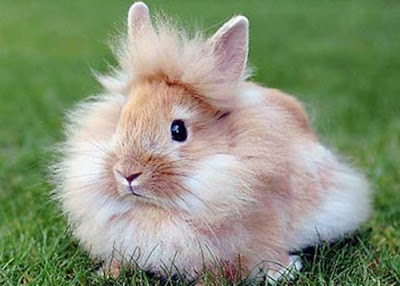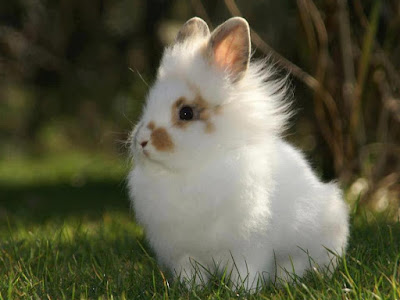Lion Head Rabbit's History, Personality and Care Tips!
Demands for fancier looking Pets in the past have often led to selective breeding, providing a myriad of Pets that varies in terms of physiques and personality. Even small animals such as Rabbits have some that are more unique looking than others. While it isn't uncommon for a few Dog or Cat breeds to resembles larger mammal cousins/ancestors in the wild— for Rabbits however, we've got the Lion Head Rabbit.
Lion Head Rabbit
Hailing from Belgium, Lion Head Rabbits were a result of crossbreeding. Natural occurances of genetic
mutation is what gives this Rabbit breed its special appearance— though the specifics in regards to the cocktail of
breeds used to achieve the Lion Head Rabbit is still a little hazy. First reports on crossbreeding were between a Netherland Dwarf and a Miniature Swiss Fox (a long hair Rabbit breed).
Fun Fact #1 The original purpose of the above crossbreeding was to create a new long haired breed. That however, resulted in a genetic
mutation— a long ring of mane around the Rabbit’s head. Thus, the Lion Head was born. ☺
Being a relatively new breed, Lion Head Rabbits continued to gain popularity around Europe and only arrived in America in the late 1990s. Although this breed was already recognized in
the UK by British Rabbit Council in 2002, the Lion Head breed was still undergoing
a 5 year test for consistency in America as presented by the ARBA (American Rabbit Breeders Association). Three successful presentations of
the Lion Head Rabbit breed within five years finally earned them their recognition title in 2014.
Lion Head Rabbit Appearance
Size — A larger-than-dwarf sized Rabbit with a small compact body frame. The average weight of an adult Lion Head Rabbit ranges from 1.4 to 1.7 kgs.
Features — Be enchanted with the wispy, thin "Lion’s mane" of approximately 2 inches long— at times forming a fringe for the Rabbit's head (yes, it is as adorable as it reads). Their bold
heads are coupled with short, upright ears.
Fun Fact #2 Did you know, Lion Heads are available in two types of manes?— Single and Double manes. Some of them can also have different diversification of their fuzz, the thin feathering wisps could be located around their flanks, cheeks and chests too.
Colours — The wispy colour variations of Lion Head Rabbits are pretty
wide. Some available colours are Chocolate, Golden, Lilac, Opal,
Black, White, Blue, Sable, Tortoise Agouti, Chinchilla, Fawn, and Chestnut.
The pretty coat of a Lion Head Bun comes with extra care requirements. Run through with a slicker comb and brush at least 2 to 3 times a week. This rids loose hair and prevents matting. During moulting (shedding) periods, increase the number of times you comb weekly— the build up of loose hairs causes a higher chance of matting!
| Source |
Generally fastidious creatures of keeping themselves clean, Rabbits do not require water baths— water baths are said to be very stressful for bunnies, and they are also highly susceptible to cold. Since the possibility of dirt getting stuck on a long coat is higher, check for debris frequently.
Hot Tip To clean off any soiled areas, use a damp cloth to spot clean, then towel dry them very thoroughly after. It is also equally important to check for long nails, clip away whenever necessary!
If you are unsure how to perform some of these tasks, bring them in for a professional grooming session by an experienced or trusted Groomer for small animals!
Lion Head Rabbit Personality And Behaviour
Not only are these
adorable, fancy-looking Lion Head Rabbits majestic, they are also playful, active and
friendly— did we also mention gentle? Active Rabbits as such require even more space to explore and keep them entertained, better still if you have an allocated space just for them! Lion Heads are also intelligent and are possible to be trained (with the help of some treats). Bear in mind that all Rabbits are often wary and jittery at the start, but there is nothing a good amount of patience, effort and care can’t overcome.☺ With proper care and love, the average lifespan of a Lion Head Rabbit is 7 to 10 years.
Rabbit Housing And Feed
Hygiene — It is extremely important to maintain the cleanliness of your Rabbits home. A regular change of food, water, bedding and litter is mandatory. Clear out their litter trays daily, and check for soiled bedding (the risk of infection is serious, leaving your Buns to accidentally consume or sit in their own waste is absolutely not good)
Litter — Should you choose a cage with wire flooring, make sure there is a solid area for your pet Rabbit to rest its feet. Should you pick a solid flooring cage or enclosure, litter-train your Buns by introducing a litter tray filled with litter (i.e. wood based pellets) and add in some feeding hay to entice them.
 |
| Double Mane |
Bedding & Toys — Avoid Pine and Cedar wood based beddings to prevent potential respiratory problems, especially known for small Pets. Keep your Buns entertained with toys and hiding spots within their space when you're not available. Wooden chew toys are handy in preventing overgrown teeth.
Feed — Hay has multiple uses besides being an important staple food source for Rabbits. Good quality Hay such as Timothy Hay provides your Bun with sufficient fiber, aside from daily servings of food pellets and greens.
Hot Tip #2 Note to only introduce greens to rabbits above 8 weeks of age. Fruits can also be given in tiny proportions as an occasional snack or treat.
You might also be interested in:
Your Stories Can Be Heard Too
Do you own a Bun? Share your story with the rest of the world! Your voices are important to us and the Pets community! Our readers are encouraged to share their Pet-related reviews of a place and its services, experiences, even lifestyle tips and tricks to better our Pets lives, on our platform, one paw at a time. Be a part of an educational and informative Pets community because at ThePetsDialogue, your voices could make a huge difference on a global scale.
Write to us at [email protected] today!
Our website is a work in progress, however, if you did find our articles interesting please do feel free to share! For more Pet care tips and other Pet-related articles, head to www.thepetsdialogue.com ☺
Disclaimer
This article was written with informational purposes, as you know, we’d love to share our collective research and experiences as fellow Pet owners and lovers. It is not meant to alternate in any way as advice or diagnosis of Professionals.
ThePetsDialogue claims no credit for images posted on this article unless otherwise displayed/stated. All rights go to respective owners as mentioned. If you do not wish for your image(s) to appear here do drop us an e-mail and it will be removed promptly. If you do wish to use any of our original published information, you are welcome to contact us!
Your Stories Can Be Heard Too
Do you own a Bun? Share your story with the rest of the world! Your voices are important to us and the Pets community! Our readers are encouraged to share their Pet-related reviews of a place and its services, experiences, even lifestyle tips and tricks to better our Pets lives, on our platform, one paw at a time. Be a part of an educational and informative Pets community because at ThePetsDialogue, your voices could make a huge difference on a global scale.
Do you own a Bun? Share your story with the rest of the world! Your voices are important to us and the Pets community! Our readers are encouraged to share their Pet-related reviews of a place and its services, experiences, even lifestyle tips and tricks to better our Pets lives, on our platform, one paw at a time. Be a part of an educational and informative Pets community because at ThePetsDialogue, your voices could make a huge difference on a global scale.
Write to us at [email protected] today!
Our website is a work in progress, however, if you did find our articles interesting please do feel free to share! For more Pet care tips and other Pet-related articles, head to www.thepetsdialogue.com ☺
Write to us at [email protected] today!
Our website is a work in progress, however, if you did find our articles interesting please do feel free to share! For more Pet care tips and other Pet-related articles, head to www.thepetsdialogue.com ☺
Disclaimer
This article was written with informational purposes, as you know, we’d love to share our collective research and experiences as fellow Pet owners and lovers. It is not meant to alternate in any way as advice or diagnosis of Professionals.
ThePetsDialogue claims no credit for images posted on this article unless otherwise displayed/stated. All rights go to respective owners as mentioned. If you do not wish for your image(s) to appear here do drop us an e-mail and it will be removed promptly. If you do wish to use any of our original published information, you are welcome to contact us!
This article was written with informational purposes, as you know, we’d love to share our collective research and experiences as fellow Pet owners and lovers. It is not meant to alternate in any way as advice or diagnosis of Professionals.
ThePetsDialogue claims no credit for images posted on this article unless otherwise displayed/stated. All rights go to respective owners as mentioned. If you do not wish for your image(s) to appear here do drop us an e-mail and it will be removed promptly. If you do wish to use any of our original published information, you are welcome to contact us!









No comments:
Post a Comment